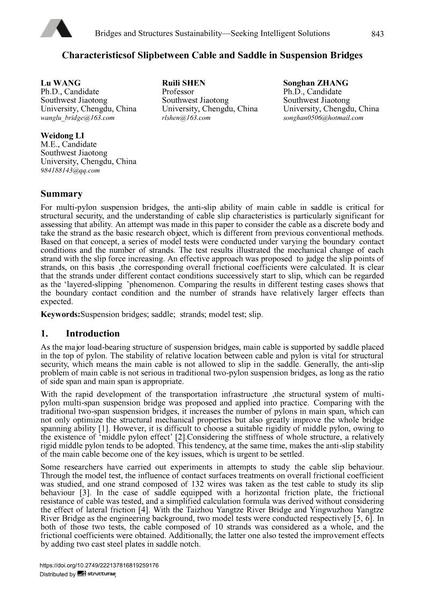Characteristicsof Slipbetween Cable and Saddle in Suspension Bridges

|
|
|||||||||||
Détails bibliographiques
| Auteur(s): |
Lu Wang
Ruili Shen Songhan Zhang Weidong Li |
||||
|---|---|---|---|---|---|
| Médium: | papier de conférence | ||||
| Langue(s): | anglais | ||||
| Conférence: | IABSE Conference: Bridges and Structures Sustainability - Seeking Intelligent Solutions, Guangzhou, China, 8-11 May 2016 | ||||
| Publié dans: | IABSE Conference, Guangzhou, China, 8 – 11 May 2016 | ||||
|
|||||
| Page(s): | 843-849 | ||||
| Nombre total de pages (du PDF): | 7 | ||||
| Année: | 2016 | ||||
| DOI: | 10.2749/222137816819259176 | ||||
| Abstrait: |
For multi-pylon suspension bridges, the anti-slip ability of main cable in saddle is critical for structural security, and the understanding of cable slip characteristics is particularly significant for assessing that ability. An attempt was made in this paper to consider the cable as a discrete body and take the strand as the basic research object, which is different from previous conventional methods. Based on that concept, a series of model tests were conducted under varying the boundary contact conditions and the number of strands. The test results illustrated the mechanical change of each strand with the slip force increasing. An effective approach was proposed to judge the slip points of strands, on this basis ,the corresponding overall frictional coefficients were calculated. It is clear that the strands under different contact conditions successively start to slip, which can be regarded as the „layered-slipping ‟phenomenon. Comparing the results in different testing cases shows that the boundary contact condition and the number of strands have relatively larger effects than expected. |
||||

